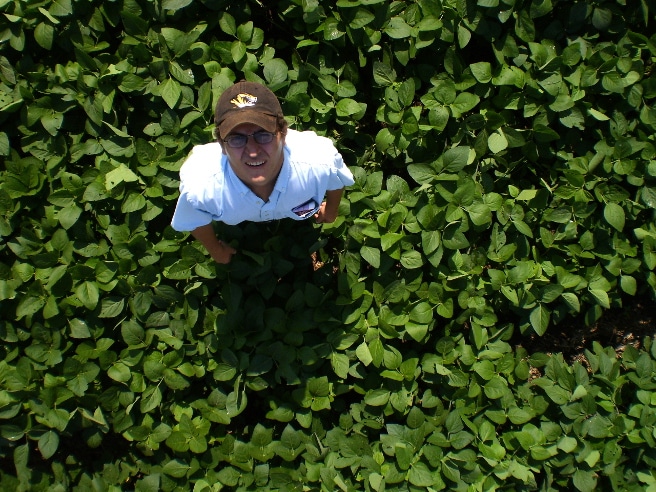The dry bean breeding program at Agriculture and Agri-Food Canada’s Morden Research Centre in Manitoba has a new lease on life for the next five years through a novel collaboration involving a Manitoba producer group, and AAFC’s Harrow Research Centre in Ontario.
Initially, there were concerns that Morden the program might face cuts or relocation to Ontario, as originally proposed by AAFC. However, Manitoba Pulse and Soybean Growers executive director Daryl Domitruk says the group’s efforts led to an innovative new model that will see funding persist to breed new varieties of pinto, black, and navy beans with enhanced disease resistance specifically tailored for Manitoba’s agricultural landscape.

“This shift in program organization and execution marks a significant change for AAFC. Over the five-year period, progeny of crosses previously made in Morden will be selected for specific traits ultimately working through all the Morden-crossed material by year five,” says Domitruk. Simultaneously, screening of progeny of crosses made at Harrow will be ramped up at Morden.
“Meanwhile, AAFC plans to increase its focus on soybean research, although the specifics are yet to be determined. By the end of the five years, we’ll see a blend of work on dry beans and soybeans coming out of Morden.”
Since the Manitoba Pulse and Soybean Growers are contributing significant funding to the effort, before they put pen to paper, the producer group made sure to consult with growers, seed industry representatives, and bean buyers, according to Domitruk.
“We wanted their input on what the objectives for the Morden program should be moving forward. They were all in favour of continuing bean breeding and research for Manitoba, considering it’s the largest dry bean producer in Canada among provinces,” he says.
“However, they emphasized focusing on the three main market classes: pinto beans, dry black beans and navy beans. So, that’s precisely what we incorporated into the proposal.”
Here’s how it works: Manitoba Pulse and Soybean Growers will play a pivotal role by contributing slightly over $300,000 towards the $2 million program spanning the next five years. This financial backing from the federal government is a crucial element of the newly launched $11 million Pulse Research Cluster initiative, falling under the umbrella of the Sustainable Canadian Agricultural Partnership.
By teaming up, breeders in Morden gain access to cutting-edge plant breeding methods honed at the Harrow Research Center in Ontario and McGill University in Quebec.

Valerio Hoyos-Villegas, assistant professor in Plant Breeding and Genetics in the Department of Plant Science at McGill University, spearheads the breeding program there. He says the arrangement was a great opportunity to collaborate and do something different than what is typically seen in public breeding in Canada.
“Honestly, I don’t understand why this sort of model isn’t more common. Being relatively new to Canada, collaborating just seemed like the natural thing to do. Maybe it’s because there aren’t many other breeding programs around me, so I was eager to make new connections,” he says.
His lab focuses on the development of superior cultivars of edible pulses, such as common bean and chickpea under sustainable production systems, with a focus on breeding, genetics and genomics, germplasm exploration, quantitative genetics, abiotic stress tolerance, disease resistance, quality, agronomic performance, human nutrition, and sensory profile. They also work in the development of high-throughput phenotyping tools for plant breeding applications.
“With the technology we have now, gathering information and sharing data and germplasm is easy and fast. I don’t see why there should be any restrictions. Sure, there are some limitations on sharing germplasm, but different institutions manage that differently. Knowledge of plant breeding tells us that if you’re worried about giving someone else an advantage by sharing germplasm, you’re actually limiting yourself, too. Genetic variation is crucial for a breeding program’s success, after all.”
While Domitruk says the Manitoba Pulse and Soybean Growers are excited about the new arrangements, he hopes it will be a springboard to even more innovative partnerships down the road that will include both the public and private sectors. This would be facilitated if government moved away from the strict five-year funding cycle that is the norm in government-funded plant breeding.
“When crops like dry beans align so well with national objectives, we have to consider both public and private investment accordingly. That said, whether we’re talking about large broad-acre crops or smaller crops like dry beans, government participation is crucial,” he adds.
“The private sector often isn’t as active in these areas, so it’s up to governments to fulfill their responsibility in nurturing agriculture and preserving its diversity. Moving forward, this will be a big challenge but one that needs to be tackled head-on.”












